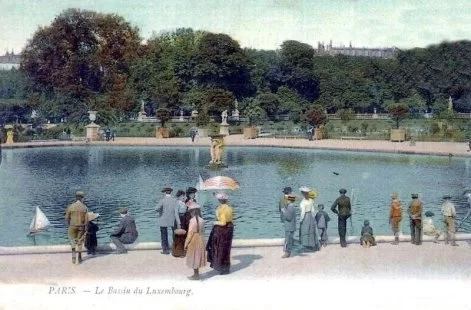Tucked gracefully between the Seine and the Luxembourg Gardens, the Odéon neighborhood in Paris offers a glimpse of the city at its most effortlessly refined. Here, the Paris of novels, of whispered conversations in cafés, and of slow, purposeful strolls along tree-lined streets comes vividly to life.
Located within the 6th arrondissement, Odéon feels both lively and contemplative, a paradox the Parisians have perfected. Though it thrives at the crossroads of Saint-Germain-des-Prés and the Latin Quarter, Odéon asserts its distinct identity—an enclave where history, culture, and daily life weave together with uncommon grace.
A Heritage Etched in Stone
The Odéon neighborhood takes its name from the Théâtre de l’Odéon, an 18th-century marvel designed by architects Marie-Joseph Peyre and Charles De Wailly. Commissioned by Marie Antoinette herself, the theater opened in 1782 as a home for the Comédie-Française. It quickly became a stage not only for performances but also for the grand drama of French history: revolutionaries stormed its doors, Bonaparte once walked its halls, and playwrights tested their voices against the winds of political change.
Today, the Théâtre de l’Odéon remains a beacon of French theatrical tradition, its neoclassical façade presiding over the Place de l’Odéon with calm authority. The theater is more than an architectural landmark; it is the soul of the neighborhood, a reminder that in Paris, the arts are never peripheral—they are vital, essential.
Streets that Whisper Stories
Wandering through Odéon, one senses the weight of stories embedded in every stone. The rue de l’Odéon itself once hosted Sylvia Beach’s legendary Shakespeare and Company, the bookshop that first published James Joyce’s Ulysses when no one else dared. Nearby, Adrienne Monnier’s La Maison des Amis des Livres welcomed literary giants like André Gide, Paul Valéry, and Ernest Hemingway.
These streets were—and remain—a cradle for literary innovation. Although the original Shakespeare and Company has moved, the echoes of those heady years endure. New generations of readers and writers still find their way to Odéon, drawn by an invisible thread of creative energy.
One of the most enchanting aspects of Odéon is the way the past coexists effortlessly with the present. On any given afternoon, you might pass a polished brass plaque commemorating a 19th-century poet before stepping into a contemporary art gallery that feels almost secretive, tucked away behind ivy-covered walls.
Cafés: The Neighborhood’s Heartbeat
If the theater is the soul of Odéon, its cafés are the heartbeat. The neighborhood offers a rich tapestry of cafés, brasseries, and tea rooms where time seems to slow, inviting both idleness and intense conversation.
The Café de Flore and Les Deux Magots, a few minutes’ walk away, are the better-known stars of Saint-Germain, but Odéon’s own establishments offer a more intimate allure. Le Danton, with its red velvet banquettes and Belle Époque mirrors, serves perfect café crèmes to students, artists, and discerning travelers alike. Closer to the theater, tiny cafés spill onto the cobblestones of the Place de l’Odéon, their chairs always turned outward, ready for the delicate art of people-watching.
There is a rhythm to the café culture here: a morning espresso shared quietly with a book, a leisurely lunch under a striped awning, an apéritif that stretches into early evening as the sky blushes pink. In Odéon, a café is not merely a place to eat or drink—it is a stage for life itself.
Hidden Gardens and Serene Corners
Despite its central location, Odéon offers pockets of rare tranquility. The proximity of the Jardin du Luxembourg is an obvious blessing: a five-minute walk is all it takes to find yourself among the grand fountains, manicured flowerbeds, and quiet statues of this regal park.
But Odéon has its own secret gardens, too. Tiny courtyards and shaded squares seem to appear out of nowhere: a vine-clad passage here, a secluded bench there. One such place is the Cour du Commerce Saint-André, a narrow alleyway that feels suspended in time. Here, beneath low-hanging lanterns, one finds some of the oldest surviving stones in Paris, including the site where Dr. Guillotin first demonstrated his infamous invention.
Every corner in Odéon promises a discovery—not loud or ostentatious, but quietly marvelous, like finding a hidden stanza in a familiar poem.
Shops of Character and Craft
Shopping in Odéon is a reminder that commerce, too, can be an art form. Forget the sprawling department stores of the Right Bank; here, boutiques are curated like private collections.
Booksellers offer rare editions behind creaking wooden doors. Artisans display hand-stitched leather goods and antique jewelry with the reverence of curators. There are bakeries where the scent of fresh brioche curls around you like an embrace, and chocolatiers whose windows are miniature masterpieces in cocoa and gold leaf.
Every purchase here feels personal, imbued with the spirit of craftsmanship and pride. To shop in Odéon is to participate in a tradition that values quality over quantity, authenticity over flash.
A Neighborhood for Dreamers
Above all, Odéon is a neighborhood that invites you to dream. Perhaps it is the way the light falls at a certain angle in the late afternoon, turning the limestone facades the color of honey. Perhaps it is the memories of poets and playwrights who once lived and loved here. Perhaps it is simply the enduring charm of a place that refuses to rush, to shout, or to dazzle cheaply.
Odéon does not perform for its visitors. It remains itself—quietly brilliant, gently stirring, infinitely Parisian. To walk its streets is to feel part of a larger, subtler story: the story of Paris not as spectacle, but as a living, breathing work of art.
Whether you find yourself lingering over a glass of wine at twilight, leafing through a novel in a centuries-old bookshop, or simply wandering without destination, Odéon will welcome you. And if you listen closely, it might even reveal some of its most carefully guarded secrets.
